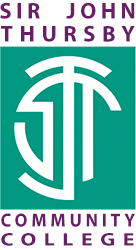Topic 5 Year 9 Mathematics
| Mathematics | |||
| Topic | Solving graphically | ||
| No of lessons | 8 | ||
| When is it happening | Term 1 | ||
| What will students learn |
Understand coordinates as solutions to linear equations, including intersections as simultaneous solutions. Be able to solve simultaneous linear equations graphically . Experience visualising trends in and intersections of linear equations. Understand parallel lines have no solution as they do not intersect. Be able to identify whether a pair of simultaneous equations have a solution algebraically and graphically. Experience connecting graphical and algebraic representations of linear relationships. |
||
| Key Knowledge that students should know at the end of 'Topic' | This is the knowledge that students will meet for the first time in this topic |
Students look at cases in which addition and subtraction of linear equations with 2 variables results in the elimination of a variable. Students investigate how scaling can help to force a matching absolute coefficient, and use this to solve simultaneous equations through elimination of a variable .Students continue to practice solving linear simultaneous equations. The rearranging practice in Week 1 is used to help organise and simplify the calculations. Students look at a new representation for simultaneous equations – Venn diagrams. Focus is drawn on the Students look at substitution between equations as a means reducing the number of variables. relationship between the intersection of the Venn and the algebraic solution. Students solve simultaneous equations through substitution to remove a variable. Two methods are looked at but rearranging is not necessary. Rearranging before substituting, or rearranging allow simpler substitution is looked at as a specific focus. Students consider when equations hide within each other and how substitution can be used more flexibly |
|
| This is knowledge that students may have met before but will need to deepen their understanding | Angles are revisited and defined as a measure of turn. Rays are used to emphasise the irrelevance of the length of the ‘sides’ to the size of the angle. Formal notation and congruence are introduced. | ||
| Key Skills that students should be able to demonstrate at the end of 'Topic' | This is the skills that students will meet for the first time in this topic | Finding the roots of an equation | |
| This is skills that students may have met before but will need to develop | Reading graphs | ||
| Key vocabulary that students should know and understand | |||
| The Big Question | Can you solve simultaneous equations graphically? | ||
|
Key questions that students should be able to answer at the end of the 'Topic' |
Can you understand how linear equations are represented graphically? | ||
| Can you find solutions (coordinates) for linear equations arranged in various ways? | |||
| Can you estimate or find solutions to simultaneous linear equations from graphs? | |||
| Can you visualise linear relationships? | |||
| Can you identify the intersections of a pair of lines on a graph? | |||
| Can you identify whether a pair of lines are parallel from their equations? | |||
| Can you find solutions to simultaneous inequalities graphically? | |||
| Can you identify from a graph whether a pair of simultaneous equations have 0, 1 or multiple solutions? | |||
